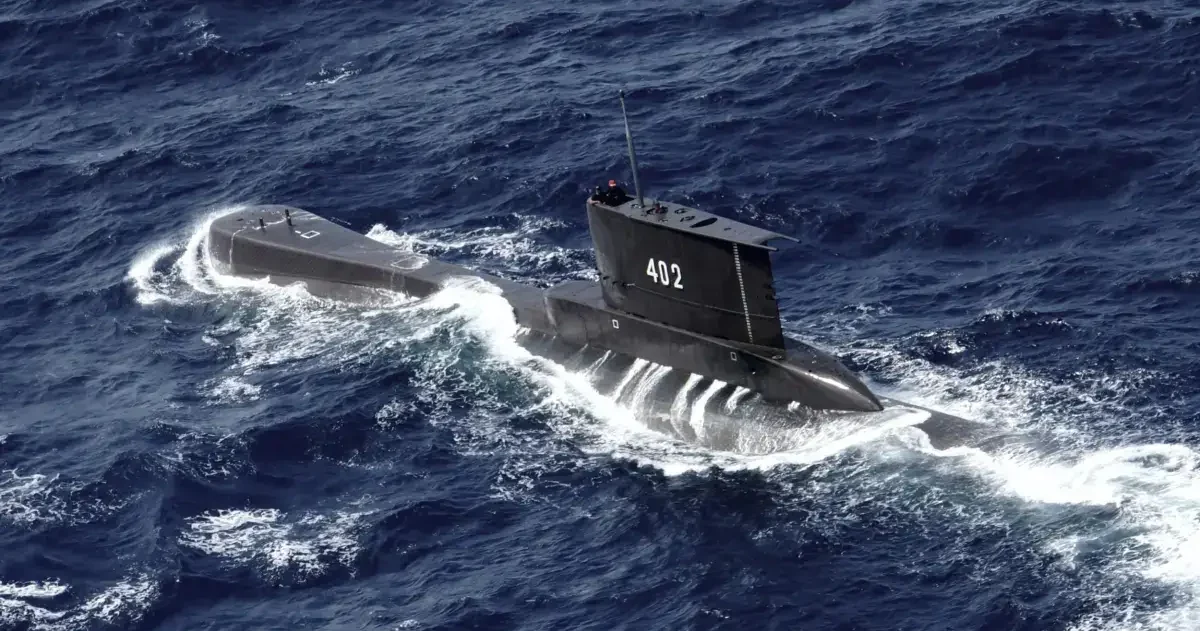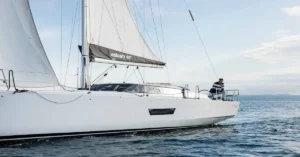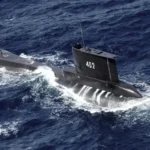Dive into the Submarine Ports world and uncover their pivotal role in America’s naval dominance. As the backbone of the United States Navy’s underwater fleet, these ports are more than just docking stations – hubs of innovation, history, and military preparedness.
From the storied decks of Naval Submarine Base New London to the strategic depths of Naval Base San Diego, these facilities ensure that the silent service remains vigilant beneath the waves.
Join me as I explore the unsung heroes of the seas, where the legacy of World War heroics meets cutting-edge maritime technology. Witness how these submarine ports safeguard peace and project power across the globe, embodying the unyielding spirit of the U.S. Navy.
I’ll immerse you in a world where stealth and strategy reign supreme, and each port tells a tale of valor and ingenuity.
My Top 3 Key Submarine Ports in the US and Their Functions
Three major facilities come to mind when I explore Submarine Ports in the USA. Each is vital to our nation’s naval defense and deterrence strategies.
Norfolk Naval Station
Location: Norfolk, Virginia
Primary Vessel: USS Wyoming and others
Role:
- Strategic deterrent
- Maintenance and logistics support
- Atlantic Fleet operations
Norfolk Naval Station is the largest naval complex in the world, a critical hub for the Atlantic Fleet. The port provides maintenance and logistical support for submarines like the USS Wyoming, ensuring operational readiness and strategic deterrent capabilities.
Naval Submarine Base Kings Bay
Location: Kings Bay, Georgia
Functions:
- East Coast Strategic Deterrent
- Home to Ohio-class SSBNs
Naval Submarine Base Kings Bay supports the Ohio-class ballistic missile submarines (SSBNs) on the East Coast. This port is essential for sustaining the submarines that form the sea-based leg of the nation’s nuclear triad.
Naval Base Kitsap
Location: Kitsap Peninsula, Washington
Services:
- Pacific Fleet support
- Trident submarines
- Submarine tenders for maintenance
Situated on the Kitsap Peninsula, Naval Base Kitsap is a comprehensive support facility for the Pacific Fleet. It houses Trident submarines and provides maintenance services with the help of submarine tenders, playing a pivotal role in our submarine force’s strength and agility.
The Most Largest Submarine Ports in the World

In discussing Submarine Ports USA, seeing how they stand globally is fascinating. Submarine ports that cater to countries’ naval demands have unique characteristics and capacities. Let’s dive into a compact exploration of the most extensive submarine ports globally.
Submarine PortLocationNotable Features
| Submarine Port | Location | Notable Features |
| Naval Submarine Base Kings Bay | Georgia, USA | Home to Trident ballistic missile submarines, this is one of the most extensive submarine bases in the world. |
| Naval Submarine Base New London | Connecticut, USA | Often referred to as the Home of the Submarine Force, it has a legacy dating back to 1915. |
| HMAS Stirling | Western Australia | The Royal Australian Navy operates this significant base, providing support for submarines in the Indo-Pacific. |
| Barents Sea Bases | Russia | These are strategic for Russian submarine operations in the Arctic region, consisting of multiple large bases like Gadzhiyevo. |
| Toulon Naval Base | France | The primary naval base of the French fleet, it also serves as a significant Mediterranean submarine hub. |
Naval Submarine Base Kings Bay, Georgia, USA Home to Trident ballistic missile submarines, this is one of the most extensive submarine bases in the world.
Naval Submarine Base New London, Connecticut, USA Often referred to as the ‘Home of the Submarine Force,’ it has a legacy dating back to 1915.
HMAS Stirling Western Australia The Royal Australian Navy operates this significant base, providing support for submarines in the Indo-Pacific.
Barents Sea Bases Russia These are strategic for Russian submarine operations in the Arctic region, consisting of multiple large bases like Gadzhiyevo.
Toulon Naval Base France The primary naval base of the French fleet, it also serves as a significant Mediterranean submarine hub.
Submarine ports are essential for the strategic operations of a country’s navy. They facilitate the maintenance, repair, and deployment of submarines. In the United States, ports like Kings Bay and New London showcase impressive capacities and have histories rich with naval milestones. Around the world, other nations maintain substantial bases that underscore the importance of submarines in maritime security.
The Evolution of Submarine Ports in the US

When I think about US nation’s military might, I can’t help but marvel at the pivotal role Submarine Ports USA has played. From their historical roots to present-day technological leaps, these ports have been the backbone of submarine operations and advancements.
Historical Significance of Submarine Ports
My fascination with history brings me to the birth of submarine ports, which dates back to the launch of the USS Holland, the first submarine commissioned by the U.S. Navy in 1900. This vessel marked a new era, underscoring the need for dedicated ports that could support submarine operations.
Early submarine classes, including the A-class and F-class submarines, were initially housed in traditional navy yards, but the evolving complexity of these vessels soon required specialized facilities.
- Introduced Submarine Ports:
- Late 1800s – early 1900s: Inception of submarine technology.
- 1900s: Navy yards adapted to accommodate the USS Holland.
Transition from Diesel to Nuclear Submarines
In the mid-20th century, the shift from diesel to nuclear-powered engines brought a transformative change to submarine ports. The development work by General Dynamics Electric Boat paved the way for a fleet that could remain submerged for extended periods, necessitating a new breed of submarine bases to support their complex maintenance and logistical needs.
The advent of these nuclear-powered behemoths forever changed the submarines’ port structure across the USA.
- Nuclear Revolution:
- 1950s – now: Substantial port updates for atomic capabilities.
- Emergence of more sophisticated submarines and port facilities.
Technological Advancements and Submarine Maintenance

As someone deeply interested in the developments at Submarine Ports USA, I’ve followed the technological advancements and the meticulous maintenance that keep our nation’s naval capabilities at the cutting edge.
Nuclear-Powered Submarine Overhauls
The process is nothing short of complex regarding maintaining our nuclear-powered fleet, specifically the Virginia-class and Ohio-class submarines. These technological behemoths undergo extensive overhauls to ensure their nuclear reactors operate safely and efficiently.
It’s impressive to see how engineers and technicians employ cutting-edge techniques to service these reactors, the lifeblood of the submarines’ operational capabilities.
Submarine Stealth and Warfare Capabilities
I find it fascinating how our submarines are designed with stealth in mind. Technological advancements have allowed for even quieter operations, rendering these vessels undetectable.
The Virginia class comes equipped with cleverly designed torpedo tubes and the capacity to launch Tomahawk cruise missiles, maintaining our strategic advantage. Furthermore, guided missile submarines enhance our warriors’ abilities by providing substantial firepower in a compact, unseen package.
Operational Dynamics and Strategic Importance

When I consider the role of Submarine Ports USA in our defense infrastructure, their operational dynamics and strategic importance stand out. These crucial ports support the United States Navy’s submarine fleet’s diverse capabilities, ensuring they are ready for any mission.
Submarine Fleet Composition and Capabilities
My understanding of the U.S. submarine fleet reveals a combination of powerful nuclear submarines, including ballistic missile submarines (SSBNs) as a component of the strategic deterrent forces, and swift attack submarines (SSNs) designed for various tasks from intelligence gathering to missile delivery.
General Dynamics Electric Boat plays a significant role in constructing these vessels. They are designed for stealth, equipped with advanced sonar systems, and can deploy various weapons, from torpedoes to Tomahawk cruise missiles, making them a central element of U.S. sea power.
Training and Readiness for Combat
At the heart of submarine effectiveness lies the rigorous training the Submarine School provides, where sailors learn the nuances of undersea warfare, navigation, and engineering. Readiness for combat requires mastering complex systems and being prepared for various scenarios, a goal overseen by the Naval Sea Systems Command to ensure alignment with strategic priorities.
The ongoing training reflects the evolution of warfare and the high stakes involved in maintaining global security through our submarine fleet.
FAQ – Submarine Ports

Plunge into the depths of intrigue with our FAQ section. Discover the secrets of these guardians of the deep, where stealth, strategy, and strength converge to protect and serve.
How often do submarines go to port?
The frequency with which submarines go to port can vary greatly depending on their mission, type, and operational requirements. Some submarines may stay at sea for months during deployment, while others may return to port more frequently for supplies and crew rest. The specific schedules are often not publicly disclosed for security reasons.
What is a submarine dock called?
A submarine dock is commonly referred to as a submarine berth or a dry dock when maintenance and repairs are required. Submarines are moored at specialized facilities that accommodate their unique size and shape.
How do submarines know their location?
Submarines use an inertial navigation system (INS), which measures the vessel’s motions and constantly updates its position. This system allows submarines to determine their location without external references, which is crucial when operating underwater where GPS signals cannot penetrate.
Do You Have insights on America’s Submarine Ports? Dive into the discussion below and share your thoughts on the USA’s 3 most famous key hubs for our underwater fleets!











